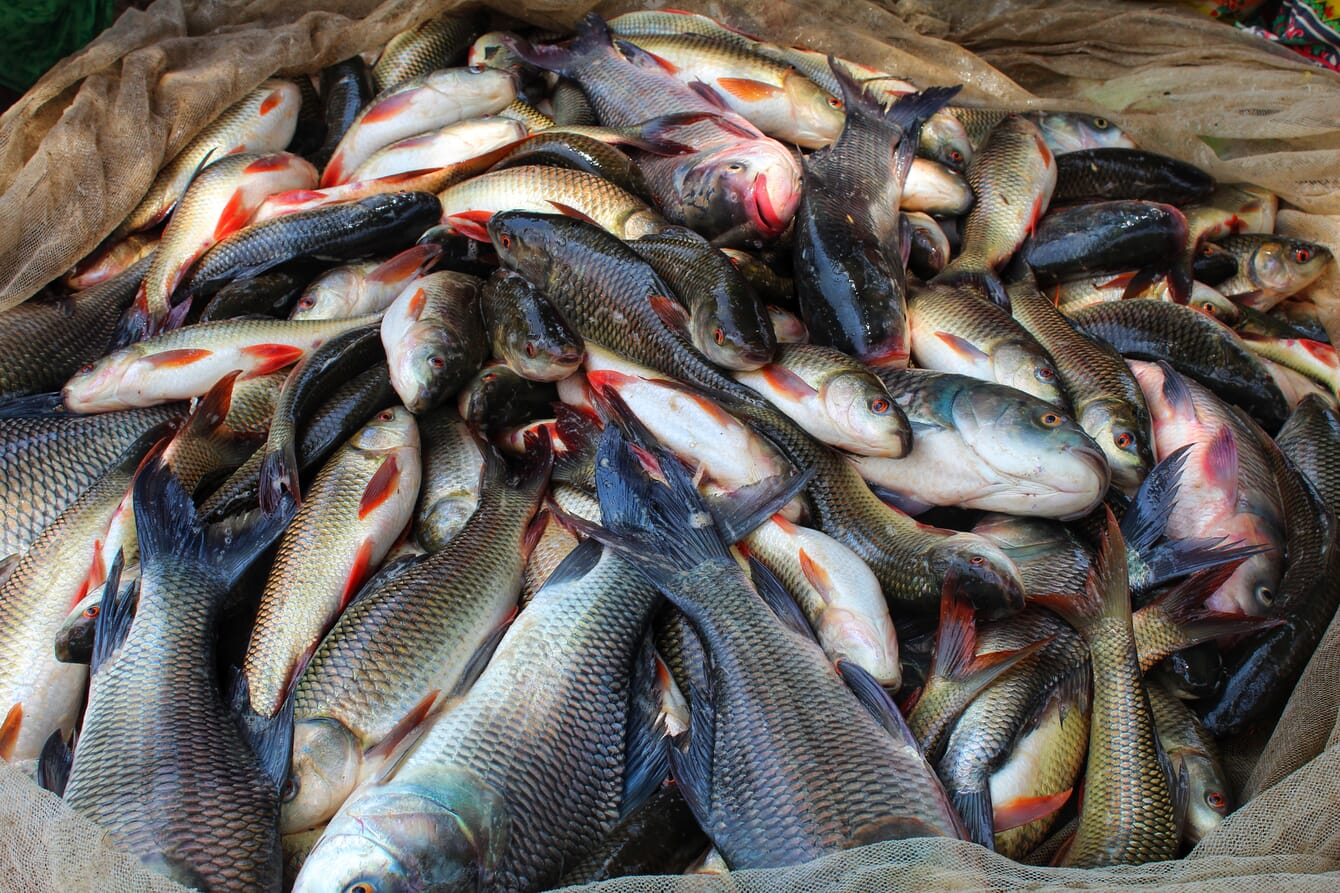Our organisation, Fish Welfare Initiative, exists because there are serious animal welfare challenges in the fishing and aquaculture industries. Most fish consumed by humans are still killed in inhumane ways, often via asphyxiation, and the stunning that does occur is often ineffective. Stocking densities often well surpass what is beneficial to the animals. The industry still struggles with parasites and disease. And there has been little to no research on the welfare requirement of many aquatic species, particularly those farmed in Asia.

Fortunately, the industry is making some progress. We’ve been pleased to see many salmon producers in Europe take up pre-slaughter stunning over the past decade, and are delighted that all the major aquaculture certification schemes, from FOS to ASC, have incorporated animal welfare into their standards.
However, many welfare issues do remain in commercial fishing and fish farming. And to an extent, we expect that they always will remain: improve as we will, raising animals en masse will simply always lead to the care of some animals being neglected.
This is one reason we’re excited about the rise of alternative seafoods: they take the animals out of the picture. There’s no need to worry about stocking densities or humane slaughter with plant-based tuna.
Challenges in the sector
I’m not an expert in alt seafoods, but my biggest concern for the sector now is whether they can reduce prices enough to make their products both desirable and accessible to the average consumer. My understanding is that these are largely issues engineering and economies of scale, and that these issues should be solvable, in the not too distant future.
I expect that some alt seafood products will start out by appealing to just a niche group of higher income consumers, and then will grow in popularity from there. This strategy has worked for other alt protein companies previously. For instance, Impossible Foods originally only sold their burgers at higher end restaurants, but now you can get one at any Burger King in the US.
Insofar as we’re concerned about making these products accessible to a wide array of consumers, both in upper-income countries like the US and in middle-income countries like India, I believe the solution is more investment in these companies, not less. I have no doubt that most alt seafood companies are doing the best they can already to make their products both accessible and desirable to the average consumer.
I’m also excited to see that there are already several alt seafood companies, like Shiok Meats, that are dedicated to serving part of the Asian market.
Goals for the sector
I follow the aquaculture industry closely and sometimes see traditional seafood producers responding with scepticism about alternative seafoods, and express concern that they may decrease traditional seafood’s market share. I understand this – alternative seafoods are a rapidly advancing new technology, with great disruptive potential.
However, I hope the alt seafood industry develops not as something the traditional industry fears, but as something that it welcomes as an innovative part of the sector. For instance, I’ve heard several people in the industry talk about the need for more young talent to get involved with seafood. Well, here’s a great opportunity! We know that young people in particular find alternative proteins appealing, and it’s pretty clear that the average demographic of the staff at these alternative seafood companies skews young.
If the seafood industry wants to make itself more innovative, dynamic, and relevant to young people, I can’t think of a better way to do that than investing in alternative seafoods.






